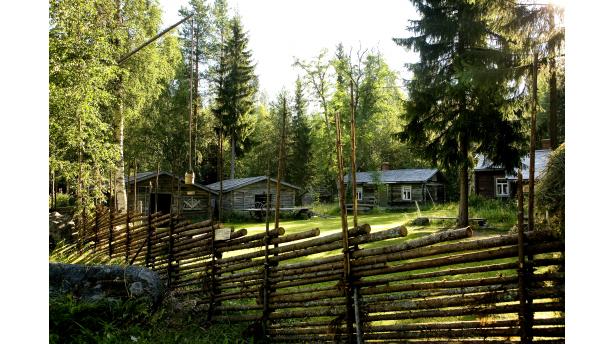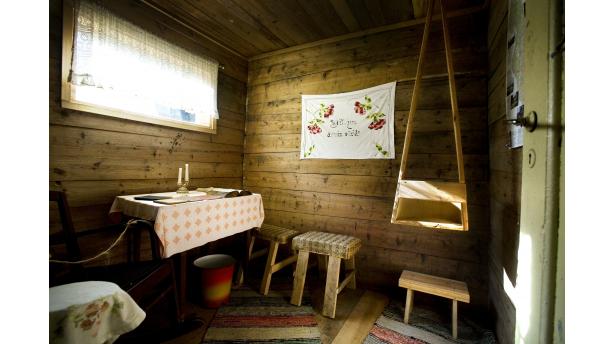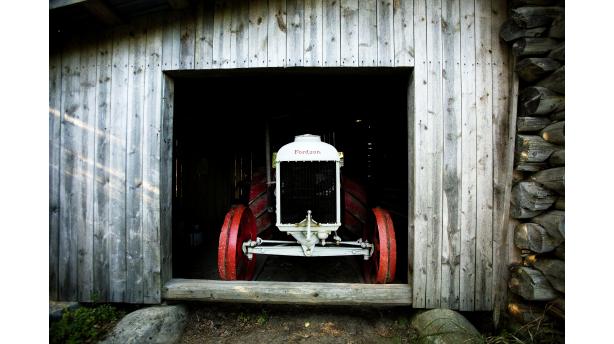Museum A-Ö » Fagerbacka Cattle Lodge
Fagerbacka Cattle Lodge



Did you know...
The bellwether had a bell around its neck and it led the other cows home unprompted in the evening.
The Fagerbacka Cattle Lodge is the only remaining cattle lodge village in Ostrobothnia. Experience the beautiful nature and atmospheric milieu in the courtyards of the greying log cabins surrounded by fences. In the cattle lodge village you can get acquainted with the dairy economy at the turn of the 20th century. Why did the cows use to graze freely in the forests? How and when were they milked? Was butter churned in the cattle lodges in the forest?
Cattle lodges used to be an important part of agriculture. Most of the rural animals grazed on the cattle lodges during the summer months, thereby saving the grazing ground of the home farm. The daughters and maids of the estates worked on the cattle lodges. The cows were let loose on the pasture in the mornings, and they were allowed to look freely for food on the swamps and forest meadows. The girls walked home for the day and did other chores there. In the evening they returned to the cattle lodge for the milking of the cows and spent the night on the lodge, in order to be able to milk the cows the next morning and release them on the pasture. If there weren’t many tasks on the home farm, the girls could spend the entire day on the cattle lodge. There was, however, always an elder woman with them in order to make sure that the work was done and not too many suitors found their way to the cattle lodge.Fagerbacka was the only cattle lodge village in Purmo, but there were many large cattle lodge villages in Ostrobothnia for example in Malax and Närpes. According to tradition the Fagerbacka cattle lodge area was built in 1825 and there were eight cottages at its peak, nine cow sheds, three wells and various outbuildings, cellars and stockpots. The Fagerbacka cow lodges were restored to their old foundations in the 1990s, and in the sparse furnishing typical for the period inhered an attic bed, a dining table, a few chairs, a bench and some tableware. There are four cottages, two cowsheds, three barns, two wells and a cellar on the site today.
The cattle lodge village is open all year. It is also possible to visit the area without a guide, as there are fact sheets in the cottages. Pack a basket and have a picnic!
You can have a go at the life of a maid or a farm-hand by participating in a time travel to the cattle lodge life. In the mid-summer people gather in the cattle lodge village for the annual summer event, when they are in for some working exhibitions, handworks and other programme. Children can get better acquainted with the cattle lodges by participating in a summer camp arranged by the municipality. During the winter months a ski trail is opened nearby Fagerbacka and on the second Sunday of March an outdoors day is arranged. On the second Advent of December rice porridge is served in an atmospheric surrounding.


